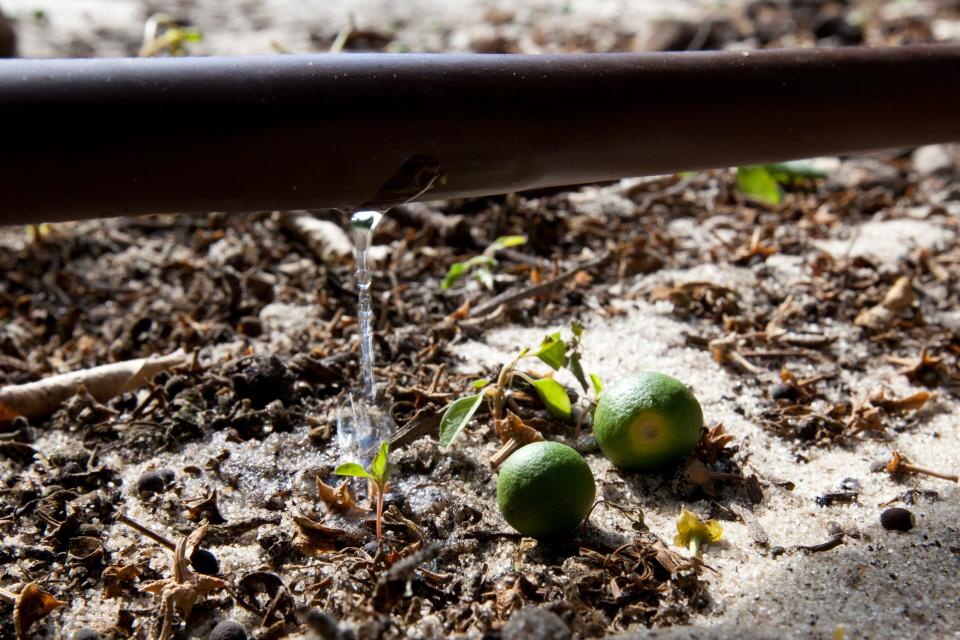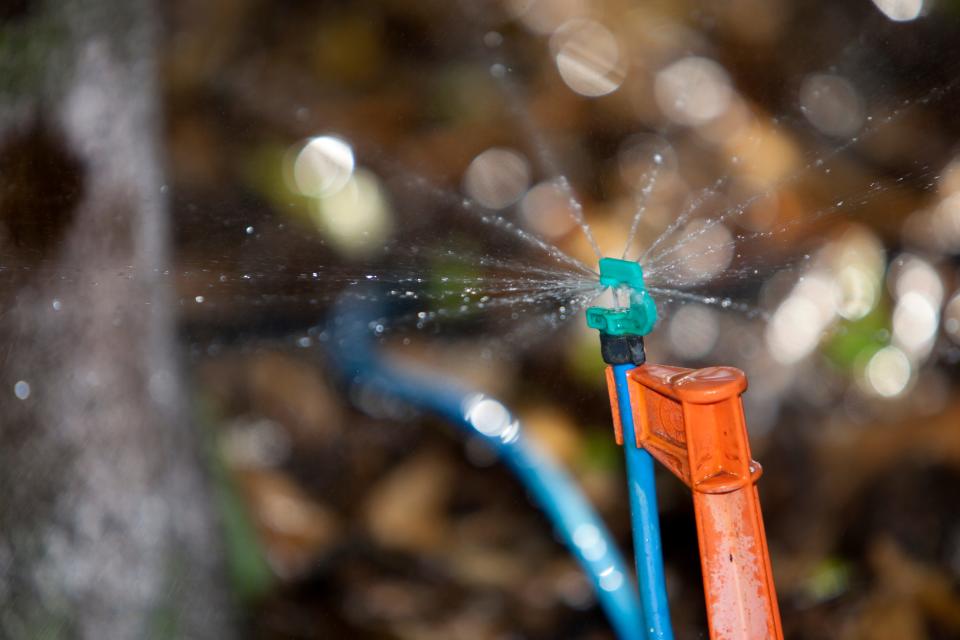From the Extension: How to check in on your irrigation system
As we enter our rainy season it is important to remember that irrigation is a supplement to rainfall. Over-watering can increase issues with pests and diseases in your landscape. Now is the time to calibrate your sprinklers, check rain sensors, and switch to more directed irrigation options.
Less liquids for lawns: Home landscapes offer chances to conserve water
More From the Extension: Summer is nearly upon us, and so are 4-H events
Sprinkler calibration includes checking that sprinkler heads are fully functional. Replace or repair any that are clogged, missing, broken, or otherwise not working correctly.
Be sure that you are not watering your driveway, sidewalk, street, or the side of your house. After correcting any issues, it is time to calibrate. Most lawns in Florida will need between ½ - ¾ inches of water per watering session.
To calibrate your system, you will need containers to catch the irrigation water. Common items that you can use are tuna cans and coffee cans. Anything similar will do as long as they are 3-6 inches around with straight vertical sides.
You will need 5-10 individual cans. Check each zone separately. Scatter the cans in the zone that you are testing, then turn the water on for 15 minutes. After 15 minutes measure the water in the cans with a ruler. You want to look at the average depth of all your cans.
Do this by adding up all the measurements and dividing by the number of containers that you used. Now you know how much water your system puts out in 15 minutes. Repeat this in all zones.
Next check your rain sensor. If you do not have one consider purchasing one or get a rain gauge. With a rain gauge you must manually turn off your irrigation if you receive ½ inch of rain fall.

To test your rain sensor, place a can from the sprinkler calibration out in the rain. Once you have collected ½ inch of water, set your rain gauge to ½ inch. Attempt to turn on your sprinkler system.
If the sensor is working, the system should not turn on. Watch the weather too. Do not water in the mornings if substantial rain is expected in the afternoon.
Keep in mind that while lawns only require ½- ¾ inches of water 2-3 times a week in the summer (including rainfall), your landscape beds may require more, or less, depending on your plants. Installing irrigation in your landscape beds is ideal.
This allows you to offer individualized watering schedules for your plants. There are many options for irrigating landscape beds. Soaker hose, drip irrigation, and micro-irrigation. All three are installed under plantings and allow for root directed watering.
A soaker hose has perforated holes that slowly release water from the entire hose. Use this in areas with plants that are still establishing. Once established, switch to either drip or micro-irrigation.

Drip irrigation delivers water directly to the base of each individual plant. Micro-irrigation is similar to typical lawn irrigation, but on a smaller scale closer to the roots. Select the option that works best in your situation.
Please contact our office if you have questions about checking your irrigation. The UF/IFAS Lake County Extension office is located at 1951 Woodlea Road, Tavares, FL 32778. Hour of operation are Monday-Friday 8am-5pm. Phone number is (352) 343-4101.
An Equal Opportunity Institution. UF/IFAS Extension, University of Florida, Institute of Food and Agricultural Sciences, Andra Johnson, Dean. Single copies of UF/IFAS Extension publications (excluding 4-H and youth publications) are available free to Florida residents from county UF/IFAS Extension offices.
Jamie Daugherty is the Residential Horticulture Agent of the UF/IFAS Lake County Extension office. Contact our office with questions at lakemg@ifas.ufl.edu.
This article originally appeared on Daily Commercial: How to check in on your irrigation system

